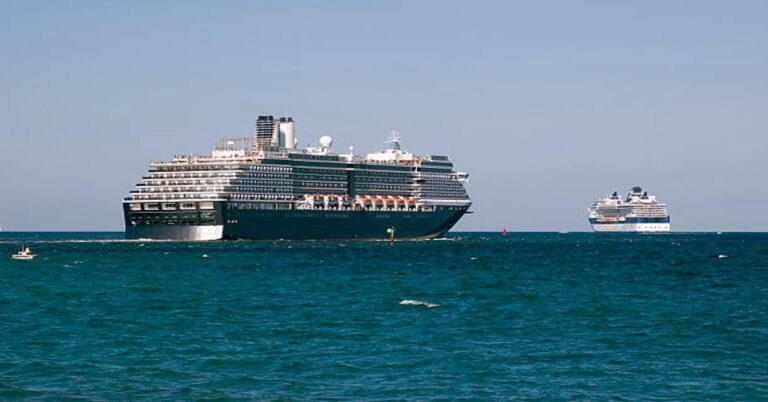
The 21st century has witnessed a steady evolution of global power alignments, especially in the maritime domain where control of sea routes, resource access, and naval presence define the balance of power. Among the most significant developments shaping today’s maritime security landscape is the growing Russia China Joint Naval Pacific. What began as occasional joint exercises has transformed into a symbol of strategic partnership and shared geopolitical interests. The two nations, each possessing vast coastlines and extensive naval traditions, have combined efforts to strengthen their maritime capabilities, test interoperability, and signal a joint front against perceived Western dominance in the Pacific. Understanding this alliance requires a closer look at its origins, motivations, operational scope, and long-term consequences for regional and global stability.
1. The Historical Context of Russia-China Naval Relations
Historically, relations between Russia and China have fluctuated from rivalry to cooperation. During the Cold War, the Soviet Union and the People’s Republic of China shared ideological roots in communism but often found themselves at odds over territorial disputes and leadership of the socialist world. The Sino-Soviet split of the 1960s turned them into rivals, even leading to border clashes. However, the dissolution of the Soviet Union in 1991 changed the dynamics. Facing Western economic expansion and military encirclement, both Moscow and Beijing saw the strategic benefit of closer ties.
In the 1990s, China was emerging as an economic powerhouse with growing interest in securing trade routes and maritime access, while Russia was seeking new partners after losing much of its Cold War influence. Gradually, the two nations began to converge on several fronts — political, economic, and military. The naval dimension of their partnership began modestly in the early 2000s but gained momentum with increasing Western pressure on both countries. Their cooperation evolved from symbolic gestures into structured, recurring joint naval exercises designed to test readiness, interoperability, and strategic deterrence.
2. Strategic Objectives Behind the Russia-China Naval Partnership
The strategic logic behind Russia-China naval cooperation is multi-layered and extends beyond mere military training. Both nations share complementary interests in resisting what they perceive as U.S.-led containment strategies. The Pacific, as one of the world’s most vital maritime theaters, is home to key naval powers such as the United States, Japan, and Australia — all members of alliances that both Moscow and Beijing view as potential threats.
For China, the Pacific represents a crucial security frontier for defending its territorial claims, especially in the South and East China Seas, and ensuring access to global trade routes. For Russia, the Pacific Ocean — particularly the Sea of Japan and the Kuril Islands region — serves as the eastern flank of its strategic deterrence architecture. Its Pacific Fleet, headquartered in Vladivostok, plays a major role in projecting power into the Asia-Pacific region.
Together, the two nations aim to achieve several strategic objectives:
- Enhance Maritime Interoperability: Joint training helps both navies operate seamlessly in multi-domain operations involving surface vessels, submarines, and air assets.
- Strengthen Deterrence: Combined exercises demonstrate a unified ability to counter potential adversaries, thereby complicating strategic planning for Western forces.
- Protect Sea Lines of Communication (SLOCs): Both countries depend on secure maritime routes for energy and trade; joint operations help safeguard these routes from piracy or foreign blockades.
- Symbolize Strategic Unity: The optics of Russian and Chinese warships sailing together underscore their shared stance against unilateralism in international politics.
3. Key Phases of Russia-China Naval Exercises
Russia and China have conducted numerous joint naval exercises under different frameworks. The most notable series, called “Joint Sea”, began in 2012 and has since become an annual or semi-annual event, showcasing the gradual sophistication of their coordination.
| Year | Exercise Name/Location | Notable Features | Participating Vessels |
|---|---|---|---|
| 2012 | Joint Sea I (Yellow Sea) | First bilateral naval drill focusing on anti-submarine warfare | 16 warships, support vessels |
| 2013 | Joint Sea II (Sea of Japan) | Expanded scope with amphibious landings | 20+ ships, submarines |
| 2015 | Joint Sea (Mediterranean) | First exercise outside Asia, strategic projection | 10 ships |
| 2016 | Joint Sea (South China Sea) | Included island-seizure and joint command operations | Destroyers, aircraft, marines |
| 2017–2019 | Baltic Sea & Sea of Japan drills | Symbolic of global reach and solidarity | Joint air-sea integration |
| 2021–2023 | Pacific & Sea of Japan | Included missile launches, reconnaissance, and logistics | Advanced destroyers, aircraft, submarines |
Each phase marked a new level of complexity, transitioning from basic communication drills to multi-domain operations involving surface, air, and undersea coordination. These exercises are no longer limited to friendly signaling; they have evolved into operationally realistic scenarios simulating maritime defense, amphibious assaults, and anti-access/area denial (A2/AD) missions.
4. Structure and Scope of Joint Naval Exercises
The joint exercises typically include several stages:
- Planning and Coordination Phase: Naval staff from both nations meet to establish joint command structures and communication protocols.
- Combat Drills: These may include anti-submarine warfare, air defense, convoy protection, amphibious landing, and surface attack operations.
- Logistics and Support Operations: Testing resupply at sea, joint repairs, and coordination of logistics chains.
- Maritime Patrol and Reconnaissance: Conducted using aircraft and drones to practice maritime surveillance and intelligence-sharing.
During these exercises, both navies employ advanced technologies such as real-time satellite communication, electronic warfare systems, and shared data networks. The goal is to increase operational familiarity and ensure that each side understands the tactical language, codes, and procedures of the other. This level of coordination suggests that Russia and China are preparing for long-term strategic alignment in the maritime domain.
5. Military Significance of the Pacific Theater
The Pacific Ocean holds immense military importance due to its vast expanse and concentration of key global powers. The U.S. Pacific Fleet, based in Hawaii and Japan, remains the dominant naval force in the region. However, China’s People’s Liberation Army Navy (PLAN) has rapidly modernized, now fielding more ships than any other navy in the world. Russia, while smaller in fleet size, retains formidable strategic assets including nuclear-powered submarines and missile cruisers.
By conducting joint exercises in the Pacific, Moscow and Beijing project a message of strategic parity with Western alliances. Their operations near Japan, Guam, or Alaska — areas traditionally dominated by U.S. and allied forces — serve as demonstrations of global reach. Such maneuvers often coincide with rising tensions, such as increased Western presence near Taiwan or NATO activities in the Arctic.
6. Geopolitical Implications for the Asia-Pacific
The Russia-China joint naval presence carries significant geopolitical weight. It challenges the existing maritime security order, traditionally anchored by the United States and its allies. Countries such as Japan, South Korea, and Australia closely monitor these activities, viewing them as a signal of tightening cooperation between two major non-Western powers.
The implications extend beyond military posturing. These exercises strengthen diplomatic alignment between Moscow and Beijing, allowing them to coordinate policy on regional issues such as North Korea, the Taiwan Strait, and the South China Sea. By presenting a united maritime front, they enhance their bargaining power in international forums and reduce their vulnerability to Western sanctions or containment strategies.
This partnership also affects smaller Pacific nations. Many island states rely on maritime trade and freedom of navigation; the presence of powerful joint fleets in the region introduces new dynamics that could influence their security and diplomatic choices.
7. Economic and Logistical Dimensions
Naval cooperation is also intertwined with economic interests. Both Russia and China depend heavily on maritime trade routes that cross the Pacific. China’s Maritime Silk Road initiative and Russia’s Far East development projects complement each other in creating new logistics corridors. Their joint naval exercises thus serve not only military but also economic purposes by demonstrating control and protection over critical sea lanes.
Moreover, Russia supplies China with energy and military technology, including advanced ship engines, radar systems, and anti-ship missiles. In turn, China invests in Russian port infrastructure and provides commercial access to Arctic shipping routes. This mutual dependency deepens as both nations seek alternatives to Western-controlled maritime chokepoints like the Strait of Malacca or the Panama Canal.
8. Command Integration and Tactical Learning
One of the most significant outcomes of the joint naval operations has been the gradual integration of command systems. Both navies have developed shared operational protocols and communication standards, enabling smoother cooperation during real-world missions such as anti-piracy patrols and humanitarian operations.
The exercises provide a testing ground for evaluating new technologies, including Russia’s hypersonic missile systems and China’s advanced Type 055 destroyers. The learning exchange extends to personnel training — officers from each country observe and participate in planning processes, learning each other’s strategic thinking and naval doctrines. This creates a new generation of officers who can operate cooperatively in future multinational missions.
9. Comparative Analysis of Naval Strengths
| Capability | Russian Navy (Pacific Fleet Focus) | Chinese Navy (PLAN Focus) |
|---|---|---|
| Fleet Size | Approximately 70 major vessels | Over 350 warships |
| Submarine Force | Strong, includes nuclear and diesel subs | Expanding, focus on stealth and range |
| Surface Combatants | Older Soviet-era cruisers, modern frigates | Modern destroyers, aircraft carriers |
| Amphibious Capability | Limited but improving | Rapidly growing with large landing ships |
| Technological Edge | Advanced missiles and electronic warfare | Superior shipbuilding and logistics |
| Strategic Goal | Defend Far Eastern waters, project deterrence | Secure SLOCs, expand global reach |
The table illustrates that each navy compensates for the other’s weaknesses. Russia’s expertise in undersea warfare and missile systems complements China’s larger surface fleet and industrial capacity. Together, they create a combined force capable of multi-layered maritime defense and offensive operations.
10. Reactions of Other Powers
The joint naval activities have drawn mixed reactions globally. The United States views them as part of a broader strategy to undermine its influence in the Indo-Pacific. Japan, located close to many of the exercise zones, has expressed concern about potential encroachment into its territorial waters. Australia and South Korea, key allies in regional security frameworks, have increased surveillance and coordination with U.S. forces in response.
At the same time, some countries in Southeast Asia have adopted a cautious approach, seeking to balance relations with both Western powers and the emerging Russia-China bloc. The situation illustrates the fluidity of regional alignments, where economic interdependence coexists with growing military competition.
11. Legal and Diplomatic Dimensions
Both Russia and China emphasize that their joint exercises comply with international maritime law, including freedom of navigation and the right to conduct military drills in international waters. However, the symbolic timing of their operations often coincides with diplomatic tensions, amplifying their political impact.
In official statements, both governments describe the exercises as “non-targeted” and “aimed at promoting regional stability,” but the strategic subtext is clear: to demonstrate a credible alternative to Western-led security architectures such as the Quad (United States, Japan, India, Australia) and AUKUS (Australia, UK, US). The Pacific naval cooperation serves as a platform for asserting multipolarity in international relations.
12. Environmental and Humanitarian Cooperation
Beyond military drills, Russia and China have occasionally used their naval partnership to promote non-combat operations, including disaster relief, maritime search and rescue, and anti-piracy missions. These activities help build a positive image of the partnership and demonstrate that their cooperation can contribute to global maritime governance.
Joint patrols in the western Pacific have included humanitarian elements, such as simulated rescue of stranded vessels and medical assistance at sea. These efforts show that while the partnership is primarily strategic, it also contains elements of soft power projection.
13. Challenges and Limitations
Despite its progress, the Russia-China naval partnership faces internal challenges. Russia’s naval modernization has been slowed by economic constraints and Western sanctions. China, although technologically advanced, still relies on Russian expertise in certain military domains. There is also the question of command hierarchy — determining leadership roles during joint missions remains a delicate matter.
Cultural and linguistic differences can affect communication, though both sides have worked to minimize this through standardization. Strategic divergence is another potential limitation; while both oppose Western dominance, their long-term goals differ. China’s ambitions are global and maritime-focused, while Russia’s strategy prioritizes regional defense and nuclear deterrence.
14. Future Outlook and Expansion Plans
Looking ahead, the scope of joint naval cooperation is likely to expand. Both nations have expressed interest in conducting trilateral or multilateral exercises with friendly countries such as Iran and India. The partnership may also extend into new maritime zones, including the Arctic — an area of increasing strategic competition due to melting ice and emerging shipping routes.
In the Pacific, future drills are expected to feature integrated command centers, cyber warfare simulations, and space-based maritime coordination using satellite constellations. These developments will enhance situational awareness and make the partnership more resilient in modern hybrid warfare environments.
15. Broader Global Significance
The collaboration between Russia and China in the Pacific represents more than military cooperation; it symbolizes a transformation in global power structures. The emergence of coordinated Eurasian maritime capabilities challenges the unipolar order that prevailed after the Cold War. It also introduces new norms of security cooperation, emphasizing mutual respect for sovereignty, non-interference, and regional self-determination.
For the international community, this partnership raises critical questions about the future of freedom of navigation, balance of power, and global stability. Whether it leads to confrontation or coexistence will depend on how other powers interpret and respond to the evolving Russia-China maritime dynamic.
Conclusion
The Russia-China joint naval cooperation in the Pacific is a defining feature of 21st-century geopolitics. It combines strategic necessity, mutual trust, and shared ambition to reshape the maritime order. What began as symbolic exercises has matured into a long-term partnership that integrates military, economic, and diplomatic dimensions.
By aligning their naval forces, Russia and China are not only enhancing their defense capabilities but also sending a clear message: the Pacific is no longer an exclusive domain of Western influence. Their collaboration demonstrates how nations can leverage historical experience and modern technology to secure their interests in an increasingly contested maritime space.
The partnership’s sustainability will depend on continued mutual benefit, balanced leadership, and the ability to manage global perceptions. Yet, regardless of its future trajectory, the Russia-China naval presence in the Pacific stands as a profound example of shifting power centers and the emergence of a more multipolar world order.
FAQs
1. What is the main goal of Russia-China joint naval exercises?
The primary goal is to enhance interoperability, strengthen deterrence, and demonstrate strategic partnership while safeguarding sea routes in the Pacific region.
2. When did Russia and China begin conducting joint naval drills?
The first major bilateral exercise took place in 2012 under the series “Joint Sea,” which continues as a regular training program.
3. Why are these naval operations important in the Pacific?
The Pacific is a key maritime arena where global powers compete for influence, trade security, and regional stability, making joint exercises strategically vital.
4. How do other countries view the Russia-China naval partnership?
Western nations, especially the United States and Japan, see it as a challenge to their dominance, while others view it as a step toward multipolar balance.
5. What future developments are expected in their cooperation?
Both countries plan to expand joint operations with advanced technologies, multilateral partnerships, and possibly new theaters like the Arctic.






